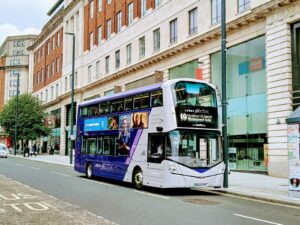Reporter Georgie Hughes explores why the UK is falling behind EV charger targets and what can be done to accelerate the rollout before 2030.
We know drastic change is needed to lower carbon emissions and improve our air quality, thus electric vehicles (EVs) are leading the charge, taking gas guzzling cars off the streets. The government plans to end the sale of new petrol and diesel cars by 2030, leaving them with just eight more years to get infrastructure in place to support this goal.
But not everyone can afford private chargers, since the average installation costs £1,000, and many don’t have access to off-road parking, further complicating things. Therefore, it is vital there are enough public chargepoints across the country to allow drivers to make the switch to electric.
Currently the UK is falling behind its target of 300,000 public chargers by 2030, with just over 30,000 in place – 10% of the end goal. At the current rate that means just over 240,000 chargepoints will be in place by 2030, 60,000 short of the target.
Air Quality News speaks to Nottinghamshire County Council to hear how the local authority has managed the EV charger rollout so far, since the region has just 23 publicly accessible chargers in place.
UK100’s Assistant Chief Executive Jason Torrance also weighs in to provide perspective from councillors across the country who are attempting to build EV infrastructure ahead of the 2030 ban.
Read on to find out more about why the UK’s EV charger rollout is stalling and whether this reflects Levelling Up failings, as publicly accessible chargepoints are largely concentrated in London, while other regions are left behind. You can find the piece on page 10 of our latest Air Quality News Procurement Guide embedded below.
Photo by Ernest Ojeh

















Leave a Reply